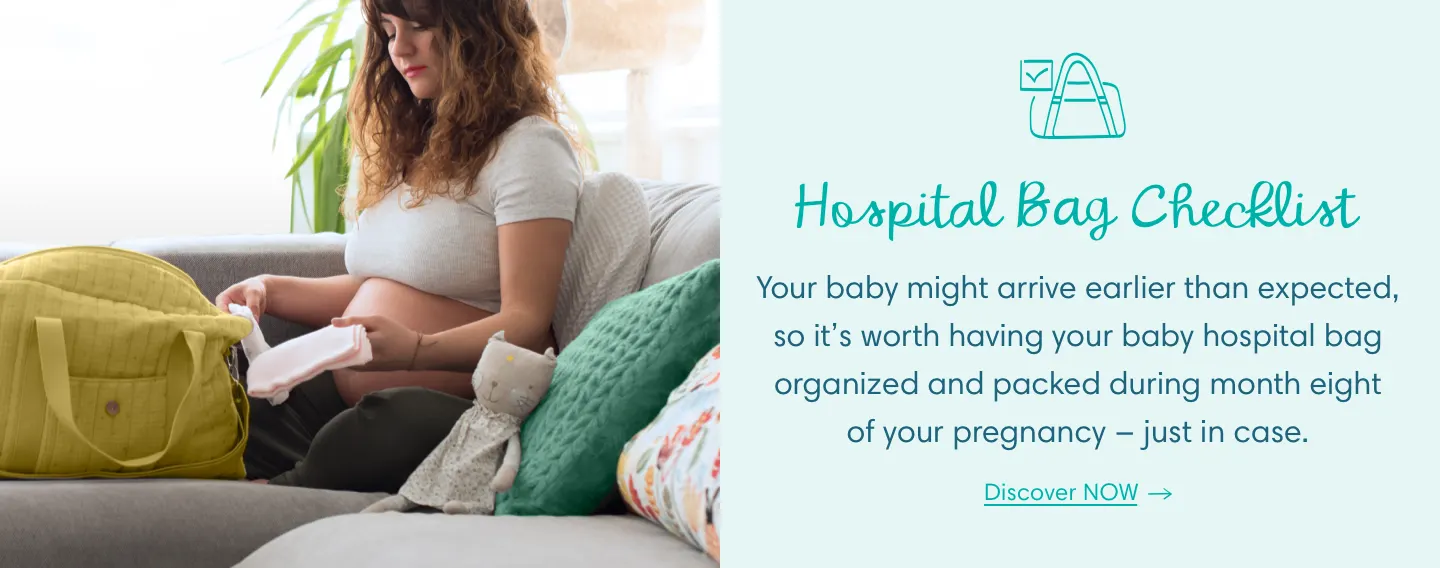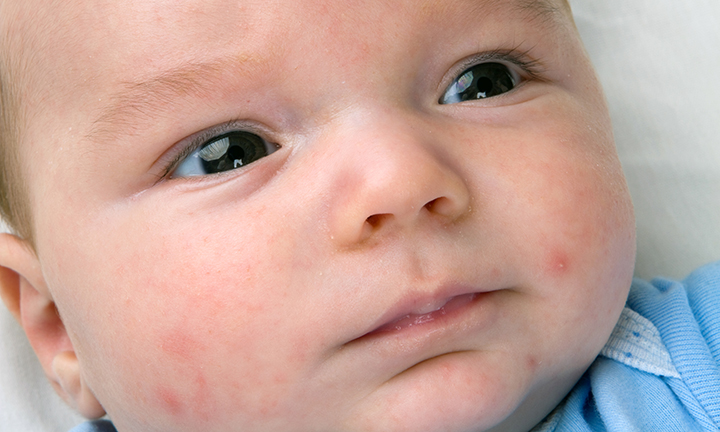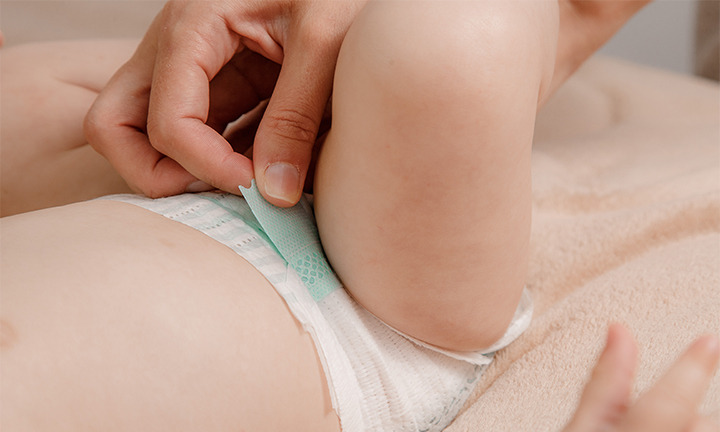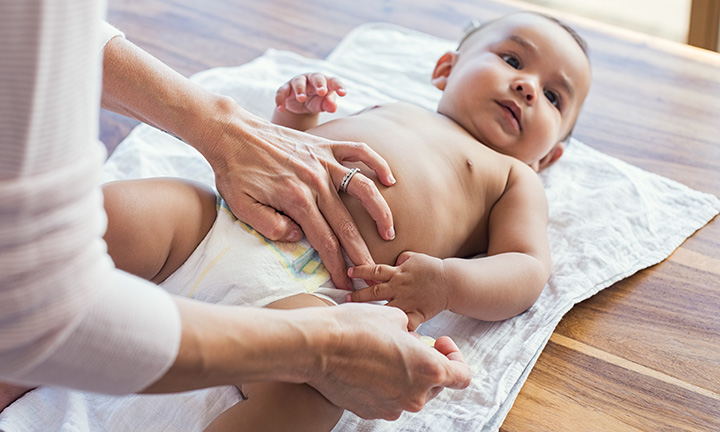
Nappy Rash Bleeding: Causes, Treatment and When to See a GP
4 min readUpdated August 19, 2025
4 min readUpdated August 19, 2025
Nappy rash bleeding can be alarming for any parent, but it's often a sign of severe irritation or infection in a very sensitive area. While most nappy rashes are mild and manageable at home, cases involving bleeding typically indicate a more advanced stage caused by prolonged exposure to moisture and friction. Recognising the signs early and acting promptly is crucial.
Here’s what you need to know at a glance:
Common Causes of Nappy Rash Bleeding:
Key Symptoms:
Effective At-Home Care:
When to See a Doctor:
Understanding the causes and knowing how to respond can help you manage nappy rash bleeding effectively. In the sections below, we’ll explore treatment options, prevention tips, and when professional help is needed.
Can a Nappy Rash cause Bleeding?
Nappy rash is a common skin irritation that affects babies, typically appearing as red, inflamed areas on the skin in the nappy region. It can be caused by prolonged exposure to wetness, friction from nappies, or sensitivity to certain products used on the skin.
If left untreated or if it becomes severe, a nappy rash may cause bleeding. Severe nappy rash bleeding often occurs when the skin becomes so irritated and inflamed that it breaks down, leading to minor cuts or sores that may bleed. It’s crucial to address nappy rash promptly to prevent it from worsening to the point of bleeding. Keeping the area clean and dry, changing nappies frequently, and using a barrier cream are essential steps in managing and preventing a nappy rash.
Nappy Rash Vs. Yeast Infection
Understanding the difference between a nappy rash vs a yeast infection is key to finding the right treatment for your baby. A regular nappy rash is usually caused by irritation from moisture, friction, or sensitivity to certain products. This type of rash is typically pink or red and may often be managed with frequent diaper changes and gentle care.
A yeast nappy rash, however, is caused by an overgrowth of the fungus candida. This rash is more intense, with bright red patches that may have raised edges or small bumps, often appearing in the skin folds. Unlike a regular diaper rash, a yeast rash doesn’t improve with standard barrier diaper creams and may persist or worsen without proper treatment.
To differentiate between a nappy rash vs a yeast rash, look for signs like a more vivid red color, defined borders, and clusters of red spots. If you suspect a yeast infection, it’s important to consult your baby’s healthcare provider for appropriate treatment.
Recognizing the signs of a yeast nappy rash/ candida dermatitis early in your baby girl or boy may help you provide the right care and bring relief to your little one.
Causes of Bleeding Nappy Rash
Nappy rash bleeding develops due to several factors, often related to prolonged irritation or infection.
Here are some common causes:
Understanding these causes may help prevent and manage nappy rash before it becomes severe enough to bleed.
How to Treat a Bleeding Nappy Rash
When you notice a bloody nappy rash on your little one, it’s essential to take immediate action by contacting your baby’s GP as soon as possible. Bleeding may be a sign of a severe rash or infection that may require professional treatment. However, while you’re waiting to see a paediatrician, you may take the following steps to help soothe your little one’s skin:
Remember, it’s important to consult your little one’s GP for further advice and treatment.
Nappy Rash Bleeding Remedies
While nappy rash Visit home remedies may be effective for treating mild cases, it's essential to exercise caution when the rash has progressed to bleeding. When you notice nappy rash bleeding, it’s best not to rely solely on home remedies. Instead, contact your child’s GP to ensure proper treatment and avoid potential complications. When it comes to your little one's health, it's always a good idea to stay on the safe side.
When to Contact a GP
If you notice that your baby’s nappy rash is bleeding, it's important to contact their GP as soon as possible. Bleeding may be a sign of a severe rash or a potential infection that needs professional medical evaluation and treatment. It’s not recommended to rely on nappy rash home remedies alone when bleeding is present, as this could lead to complications.
Additionally, if the rash doesn’t improve within a few days, spreads beyond the nappy area, or is accompanied by other symptoms like fever or pus-filled sores, these are all signs that you should seek medical advice immediately.
To help your baby’s skin recover swiftly and comfortably, consider consulting with their GP. They can evaluate the rash's severity and suggest appropriate treatments, which may include prescribed medications or other medical solutions.
The Bottom Line
If your baby is experiencing bleeding from a nappy rash, it's crucial to consult with their GP for the best course of treatment. Early intervention and adherence to medical guidance can help avoid further issues and ensure your baby remains at ease.
For parents seeking additional support, the Pampers Club app offers Pampers' cash that can help you save on the essential products needed to keep your baby happy and healthy.
How We Wrote This Article
The information in this article is based on expert advice found in trusted medical and government sources, such as the American Academy of Paediatrics and the American College of Obstetricians and Gynaecologists. The content on this page should not replace professional medical advice. Always consult medical professionals for full diagnosis and treatment.
Read more about Baby
Related Articles
Join Pampers Club and get:














